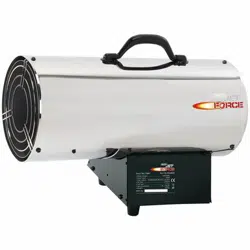Loading ...
Loading ...
Loading ...

8. ASSEMBLING THE SPACE HEATER
8.1 GUIDELINES OF FUEL GASES
This heater is intended for the use of temporary heating of
buildings under construction, alteration or repairing, in
accordance with BSEN449:2002+A1:2007(E). There may also
be other local standards or regulations governing the use of fuel
gases and heating products, of which you can get advice from
your relevant local authority.
Propane and butane belong to the odourless fuel gases family.
Normally gas suppliers will add an odour-making agent to help
you detect a gas leakage. However, the odour added can fade
over time. Fuel gases maybe present even though no odour
exists.
These heaters are intended for use with Propane (I3P) or
Butane/Propane mixes (I3B/P). Any other fuel gas is considered
misuse and dangerous.
To check the leakage of propane/butane please use a
professional gas leakage detector or simply with soap and
water solution. Never check with a flame!
Propane and butane are heavier than air. If there is a leakage, it
sinks to the lowest possible level, collecting there with the
surrounding air, forming a potentially explosive mixture. It is
prohibited to use these gas heaters in high rise flats, bedrooms,
bathrooms, basements or below ground level.
8.2 VENTILATION
Warning: Be sure that the heater is only ever used with correct
ventilation. Make sure that no object may obstruct the fan air
intake. (Fig.2.)
OXYGEN DELETION:
The combustion of propane will consume a lot of oxygen (with
butane even more). The minimum ventilation required by these
heaters is 30cm3 per kW heat output is strongly recommended.
Never use the heater in an enclosed space.
CARBON MONOXIDE (CO) POISONING:
Even though the direct-fired system of this heater operates very
close to 100% combustion efficiency, it still generates small
amounts of CO. Some people are more affected by CO than
others. The symptoms of CO sensitivity are headache,
dizziness, burning eyes and nose, nausea, dry mouth or sore
throat, etc. Be sure to follow advice about ventilation.
- 12 -
Loading ...
Loading ...
Loading ...
